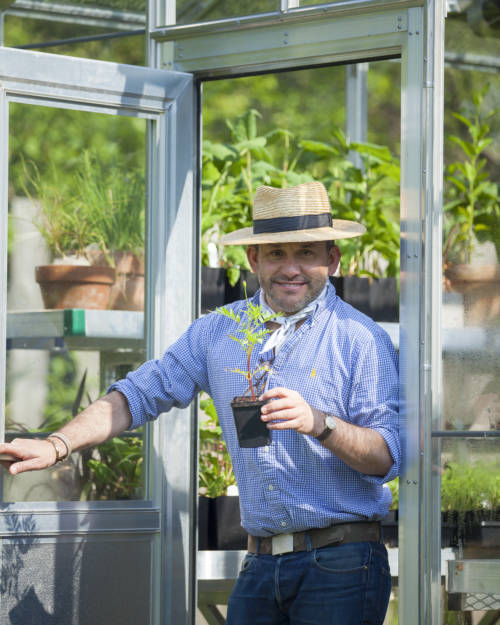
Alejandro Saralegui on Preserving the Legacy of Madoo
In Search of a Greener New York is an ongoing Garden Collage series of explorations about sustainability efforts in New York City and beyond– including the people, places, and ideas that are making Manhattan a healthier, happier place to live. In this column, we spotlight individuals who are making New York a “greener” place in an attempt to discover how, exactly, they are doing it. This week, GC spotlights Alejandro Saralegui of the Madoo Conservancy in Sagaponack, New York.
In 1967, the artist, writer, and gardener Robert Dash began building one of his life’s greatest works: the garden refuge known as Madoo. Located in the center of Sagaponack, New York, Madoo is part traditional garden, part historic museum, and part ever-evolving installation, melding history, nature, and art in an idiosyncratic formula of its own. Dash was something of a Renaissance man– his paintings are displayed around the world, from the Guggenheim to the Museum of Modern Art in Munich– and Madoo (which means “my dove” in Old Scottish) mirrors his assorted, at times contradictory interests.
For Madoo’s Executive Director Alejandro Saralegui (pictured above), it’s a dream job. “Ever since I was a little boy, I’ve always liked gardening,” he told GC. “As a little kid I knew I wanted to either garden or be a curator or art historian.” After working for The Met out of college and thereafter taking a brief stint in fashion, Saralegui ended up at Madoo six years ago, finding a space where gardening and museum work merge into a kind of living masterpiece, one that both honors and becomes art.
Both the art and the garden range over different time periods, drawing little bits from across history–everything from Georgia O’Keefe’s letters to principles of Tudor garden design. Even the property itself lends itself to the mix: Madoo’s two acres encompass a 1740s barn and home (“Now, how much is left of it…” Saralegui adds. “It’s probably a splinter.”), and a second large barn from 1850, in addition to more modern structures. Yet, in spite of its muddled ancestry (or perhaps because of it), Madoo finds a balance and peace, unified by the grandeur of its greenery.
Part of what ensures Madoo’s splendor is its long-standing status as organic land. As Saralegui explains, “The property was never farmed, which is very important in terms of Long Island. Out East, there was a lot of potato farming, which is a very toxic form of farming.” Madoo, however, was never farmed in the 20th century and had therefore always been organic when Dash purchased the property in the 1960s.
“People don’t associate the formal gardens with organic gardens. They associate the organic gardens with messy fields.”
Saralegui jokes “it was either 60s counter-culturalism or WASP thriftiness” that kept Dash from using any industrial pesticides in the ensuing decades. Either way, Madoo’s status as an organic garden is, as Saralegui reveals, “extraordinary because it’s a very formal garden, in a lot of ways. People don’t associate the formal gardens with organic gardens. They associate the organic gardens with messy fields.”
But Madoo steers clear of being too formal a garden. Since Dash’s passing two years ago, Saralegui has been in charge of maintaining Madoo’s mission as an unconventional, evolving space. “[Robert Dash] was very, very clear with his instructions about making sure the garden wasn’t ‘preserved in amber’– which was his expression,” Saralegui clarifies. “He wanted new varieties of plants coming in. He wanted old things out. If it’s not happy, get rid of it. If it doesn’t look good, change it.”
Supported by the rich soil, inspired by its long history, and guided by Dash’s imaginative legacy, Saralegui has ensured Madoo remains a picturesque feature of New York, one not to be missed even in a state crowded with world-class museums and beautiful scenery. Madoo has carved something of its own, drawing together so many different strands in a completely natural way. Here, there is always something old, new, familiar, and strange. As Saralegui says, “The grass feels different under your foot.”










































